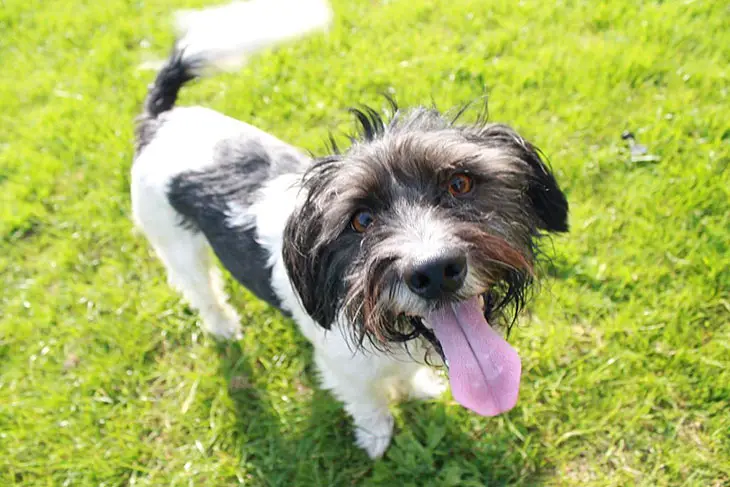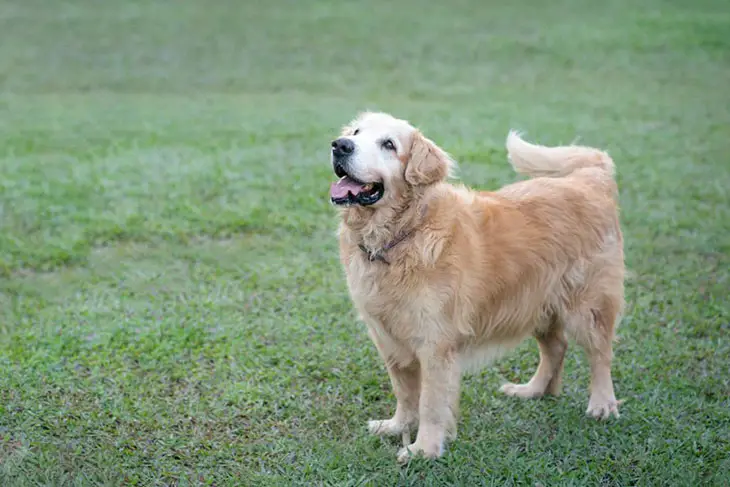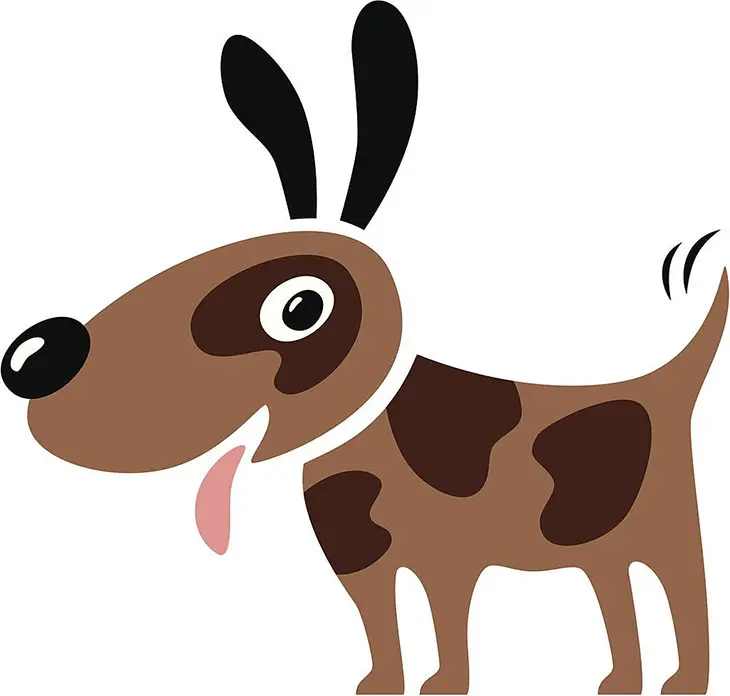A dog barking and wagging tail is not something out of the ordinary. Some owners even see that almost every day, with the pets circling their tails excitedly whenever their favorite humans come home.
However, it’s important to note that a dog barking but wagging tail does not always signify happiness or positive moods.
Like human beings, a dog’s simple gesture can mean many different things, which parents must deduce to give them the most appropriate treatment.
In this insightful article, you can trust Mitchell’s guidelines to deliver exactly the answer you want. Get the ball rolling for more tips and guidance.
Why Is My Dog Barking and Wagging Tail At The Same Time

In common cases, positive moods are often involved : feeling excited or encouraged, which results in playful growl.
But sometimes, there are other reasons for this unusual canine communication: the dogs might demand something from you, try to protect itself from external threats, or show aggressive responses.
1. Feeling Threatened
Dogs wagging tails do not always signify friendliness. A common reason behind this behavior might be a sense of feeling threatened. Pay attention to WHEN it happens; do your dogs do so:
- During your screaming and shouting?
- When strangers/ unfamiliar people are nearby?
- When loud noises are heard inside the house?
If that’s the case, chances are the pet is being scared away by these people and sounds.
2. Feeling Excited
Excitement is probably one of the most expected/familiar causes – something even novices should not be surprised about.
You will see the pet wag its tail frequently when being taken for a short walk or fed delicious foods for breakfast.
3. Being Aggressive
The symptoms might be more or less similar to the first scenario (feeling threatened) but steps up a few notes.
The types of barking/wagging are much more intense here, with your canine friend not hesitating to show the world its inner predator through snarling, alarm barking, gritting teeth, and extremely stiff body postures.
4. Demanding Something
Like a child, dogs have their own ways of demanding something, especially if you have always given it to them before and forgot to do so today for some reason.
This phenomenon of attention-seeking barking often occurs during meals or before a specific scheduled time for exercise and food.
5. Feeling Encouraged
There’s also the possibility that your dogs realize a certain alternative manner will get rewarded (for instance, you tend to give it more frequent treats if it lies down obediently when a guest visits).
Hence, when a dog barks but wags tail, that means it understands what you want and will likely repeat that encouraged behavior in the future for more rewards.
What Are Some Abnormal Signs Of Dog Barking and Wagging Tail At Same Time?

Are there high frequencies of wagglings and high-pitched growl-barks – even when there seem to be no noticeable threats or strange events around?
Try to bring in some treats that your pet usually enjoys (foods, toys, etc.) to see whether those excessive barkings stop.
If they do not, the pet might suffer from internal pains or disease – but have no way of telling you what it feels.
In that case, bringing it to a vet or clinic for more inspection is your best bet. Fortunately, such cases are quite rare.
Dog Barking While Wagging Tail – How to Tell If It Is Happy or Nervous?

As you can see, there are numerous reasons behind a dog barking with tail wagging; he might either be extremely happy or extremely angry, and most people struggle to differentiate those two.
This section will lend you some secrets to navigate your dog’s mood and understand its intended messages.
1. Tail Positions
One of the first aspects to which you should pay close attention is where the dog positions its tail. There are two possible and most common scenarios to discuss:
Up/Down
Dogs moving their rigid tails up and down are a popular sight. But how do they differ?
The “up” placement implies that your pet is growing more dominant or assertive – almost comparable to raising flags. Its intended message is” I am the strongest dog – the one in charge in this place.”
These dominance-displaying behaviors often lead to fighting, particularly among puppies. Click here to learn how to stop them!
On the other hand, a put-down tail conveys something completely opposite: “YOU (the other dogs/its owners) are the one in charge now.”
How about tails curling between the legs? Your pet probably tries to exclaim: “I am 100% harmless. I submit. Please do not hurt me.”
The key takeaway: Raised tails do not necessarily equate to aggression, but lowered tails ALWAYS indicate submission.
Sides to Sides
Now we come to another possibility: the dog wags its tail from one side to another.
A natural assumption from most owners is that it’s showing happiness, but well, that does not always apply! Studies have discovered that which conclusion you should jump to depends on the dog’s biased sides.
Are the tails strongly moving to the right? Then you can breathe in relief; your canine friend is clearly displaying positive and friendly demeanour, such as interest or excitement.
However, a tail leaning more on the left points to negative feelings like aggression, fear, or signs of separation anxiety.
These findings are also consistent with biological standpoints. In numerous animals (including humans and dogs), the brain’s left side takes charge of positive behaviors, and the right side deals with negative ones.
As each brain side manages the body’s opposite parts, the differences in meanings behind the wag bias are inevitable.
You should also note that the above messages do not change their implications regardless of whether the animals are left-pawed or right-pawed.
2. Other Important Signals
The Overall Context
You should not assess the tail’s biased side or body position in isolation; it’s a must to combine them in one go for a more appropriate evaluation!
Suppose the dog’s tail leans to the right at a much lower position than normal; then it means the dogs are submissive but in a content/satisfied way: “You are the boss here, and I am totally fine with that. Everything’s good for me.”
But what if the tail is at a greater height than usual on the left side? We can say it’s the dog’s confident manner of showing who is the dominant one.
And, of course, as briefly mentioned above, timing also plays a crucial role.
Should the dog bark at people/wag its tails at a particular period of time more often than others, this specific timing might be a part of the reason.
For instance, a dog wagging tail and barking at 2 p.m – the time you would usually take it for walks in the park – clearly screams: “Hey, human, it’s time for my walks! Have you forgotten?”
Speed
Aside from the position and side, you should also take note of the tail wag’s speed. The faster it moves, the greater the positive/negative energy it exudes!
By illustration, low, fast, and active tail wags to the right signify a 100% submissive dog. Meanwhile, high and quick movements on the left hint that you should walk away from the pet as soon as possible.
At the most extreme level, the tails will vibrate rather than wag – a dog that you MUST avoid at all costs for safety reasons!
But regardless of positions, at least here’s some great news: no matter right or left, high or low, slow speeds ALWAYS indicate a curious and calm dog safe for you to approach. You can pull down your guards now.
Other Aspects of Body Language
Varied combinations of crystal-clear body language indicate varied messages. Snarls and barks at people coming – when going with stiff postures – are clear signals that the dog wants to be left alone.
At the same time, a dog barking tail wagging while jumping/licking your face is probably feeling extremely excited and happy.
We also suggest close observations of other facial features. Avoiding all eye contact, flicking tongues, or yawning at the wrong times are possible symptoms of discomfort and anxiety.
What To Do When Dog Wagging Tail While Barking

1. Get Some Help
If aggression is the root cause that starts it all, we are afraid dealing with the pet by yourself might be a bit of a stretch.
Under such circumstances, you should get some professional help from the neighborhood’s animal behaviorists or dog trainers.
They will give you expert guidance tailored for your specific dogs and suggest solutions to handle it safely.
2. Do Not Intimidate It
As discussed above, a sense of feeling threatened is a possible reason behind the dog’s territorial barking and excessive wagging.
Hence, do not scare it further and make things worse. Threatening mental stimulations are a big NO.
Instead, stay as calm as possible, using positive reinforcement crate training to coax the pet into behaving as you want.
3. Do Not Reward The Behaviors
Special treats only make the dogs bark louder. Turning a cold shoulder will do the trick here, which makes it stop the compulsive barking and realize these compulsive behaviors do not result in rewards.
Conclusion
Is your dog barking and wagging tail often? Then this article from Mitchell’s expert team is what you need, discussing in detail all the potential messages your pet might try to convey through those signals.
We also lend excellent tips for confused owners to differentiate between the dogs’ positive and negative moods, allowing these pet parents to give their beloved dogs what they need most!
Different solutions and treatments are proposed accordingly depending on the dogs’ intention. Keep them in mind, and don’t forget to write to Mitchell if these frustrating situations still trouble you.
Good luck with your future dog raising, and we hope you all the best!
